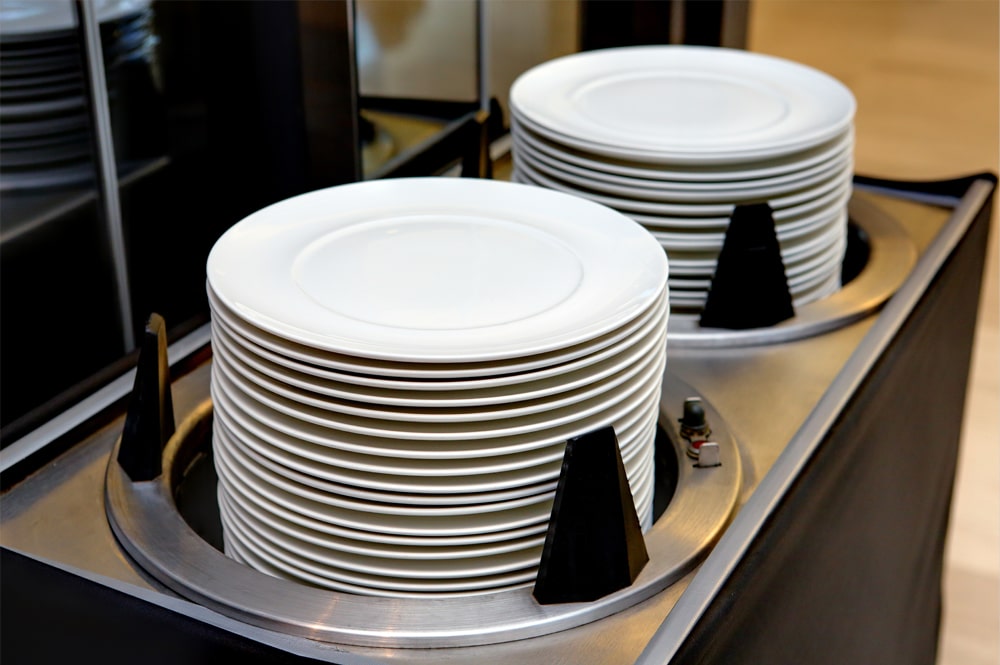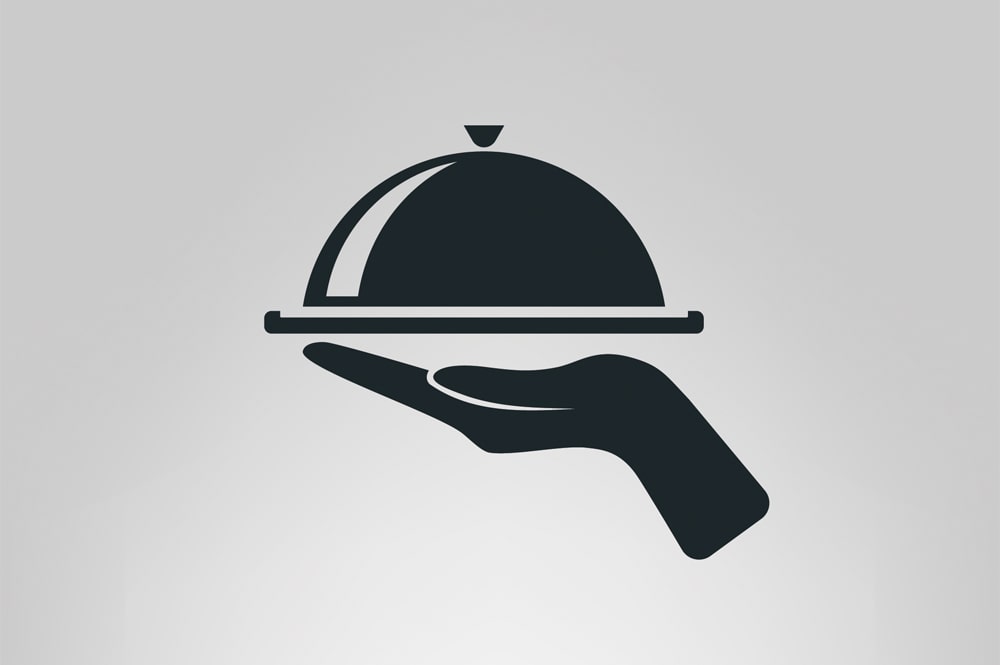Your Cart is Empty
Free US Shipping
Free US Shipping
Countless restaurants warm their plates before serving them to customers; this might seem like a strange habit, but warm plates provide more practicality than a pleasant experience alone.
Restaurants warm plates before serving them to help the food maintain its temperature on its way to the customer’s table. Warm plates will keep the food warmer longer, whereas dishes that are cooler than the food will absorb the food’s heat, and the temperature will drop immediately.
There are many options that restaurants can use to warm plates. But first, let’s take a closer look at the science behind why this method works so well and why it would lead to happier customers.
Have you ever ordered pasta at a restaurant and found it to be disappointingly lukewarm? That was probably because the plate hadn’t been warmed beforehand.
A warmed plate can be the difference between an exquisite meal and something that’s just okay.
But does warming the plate before putting the food on it actually make a difference? Science says it does.
Heat is going to travel from hotter objects to cooler objects through a scientific process called conduction. Conduction is when heat travels between items that are in contact with each other. In our earlier example, conduction would occur between that wonderful pasta dish you ordered and the plate it’s sitting on. Let's take a look at three different scenarios:

The quick transfer of heat between the plate and the food is why restaurants warm plates before serving them. After all, no one likes cold food when it's supposed to be served hot.
It's easier for the restaurant to keep the food warm by simply heating the plate before putting the hot food on it. Warm food on warm plates means higher customer satisfaction and better reviews.
So we know why it's important to warm plates before plating the dish, but how do restaurants do it? There are a few main ways.
Heat lamps and strip warmers are often seen in the restaurant pick-up area, where the chef leaves the food for the server to bring to the table.
They're a short-term solution to food losing heat between when it's off the grill and on the table. However, these warmers can be used to warm the plates before the food is put on them. Some restaurants leave a stack of plates under the strip warmers before plating the food.
If the dish needs to be tossed under the broiler for a last-minute cheese melt or similar effect, then sometimes restaurants will plate the food and put the entire plate under the broiler. This is assuming their plates can safely withstand the temperature. While finishing cooking under the broiler, the plate will heat as well.
The downside of using the broiler as the primary method to heat the plates is two-fold. One, not all dishes can be finished cooking under the broiler. Two, the plates can be scorching, leading to waitstaff injury.
Some restaurants have a small oven that they keep at a low temperature, usually less than 150 degrees, with the sole purpose of storing their dishes in it.
This is an effective way of keeping the plates warmer than room temperature. However, it can be pricey to run an oven all day to solely heat plates and bowls. Furthermore, some restaurants don't have the space for that luxury.

Plate warmers are usually a low-cost countertop option. They come in many different sizes and look similar to a countertop griddle.
The good thing about designated plate warmers is that they're safe, and they'll keep the plates warm but not scalding. The bad thing about plate warmers is that they take up a lot of coveted counter space.
Hot water is a classic option for quickly warming a dish. To heat a plate using hot water, the chef would run the plate under hot water at the sink, then dry it with a towel.
This option works well; however, the plate won't get as hot as other options, and in a fast-paced kitchen, this method could take too long.
Some people worry that the plate will be too hot when served, but most hot plates lose heat quickly. The purpose of warming the dishes before serving is to help the food maintain its heat while in transit to the customer.

Think of all the times a server has put a plate in front of you and said, “Careful, the plate's hot.” How long were you actively careful for? A minute or two?
Hot plates will lose their heat fairly quickly once they’re on the table, so as long as the server is mindful, no one should be burned. Most plates are heated until warm, not scalding.
There are three main reasons why restaurants would choose not to warm plates before serving them:
Just like warm plates are an elegant touch to any hot meal, so are chilled dishes with food that’s best served cold. Food that could be served on chilled plates would include options like salads and some desserts.
Although the food is cold, there is still a heat difference between the food and the room temperature plate. This time, since the dish would be warmer than the crisp salad greens, it would warm the food.

To prevent that from happening, many restaurants choose to chill their salad plates and ice cream bowls; this ensures that the food remains chilled on its way to the customer. One way to do this is to keep some dishes in the fridge—sometimes the freezer.
Warm plates are a nice touch to any hot meal, and restaurants that invest in a plate warming method will have customers that appreciate it. Although warming plates can cost more, many restaurants find the cost worth it as they have loyal, happy customers who will continue to dine with them in the future.
